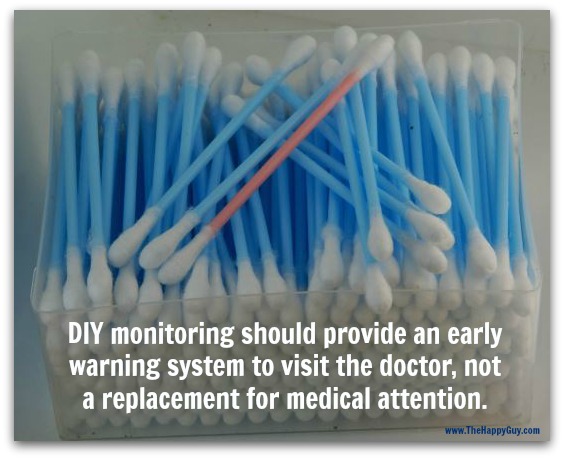Once upon a time, healthcare was the mysterious domain of trained professionals. Today, we are taking healthcare into our own hands. This should not replace professional medical treatment, but rather enhance it.
We are all interested in looking after our health and making sure we are up to date with the latest self-help medical care. But when does it all go too far? As an average Joe like me, you might be comfortable diagnosing yourself with the common cold or a migraine, and seeking relevant treatment, but how far can this be taken?
Treating consistent problems
For those of us with recurring conditions, like high blood pressure, self diagnosis becomes part and parcel of living with the ailment. Once you get used to looking for the signs and identifying problems, you find that doctors and nurses are no longer your first point of call. Medical staff are still there for emergencies and when things take a drastic turn for the worse, but for day-to-day monitoring, you’re looking after number one.
Monitoring some of these conditions is fairly easy to do at home, thanks to modern blood pressure monitor units. It is pretty easy and simple to buy your own blood pressure monitor, and there are a lot of different models out there so do have a choice of pricing. It is most important to buy one that you understand and can operate easily; pay close attention to this because the whole point of DIY healthcare is that you are actually capable of doing it. There’s no point getting stressed buying a machine you can’t operate. You won’t be doing your blood pressure any favours by getting stressed over its monitoring equipment.
Taking more drastic action
Alongside units that simply monitor your blood pressure, there are also defibrillators on sale for personal use. This may seem shocking, because we are used to seeing them in arenas and conference halls, but if you have a weak heart or fall down the stairs at home, the defibrillator at the sports center might be of little comfort. Providing you’ve had the necessary training and follow the instructions, you should be more than capable of managing it.
If you or someone you love is unfortunate enough to suffer an accident and be in need of immediate attention then this is one tool that could help with resuscitation. Emergency services do their best to get to accident sites as quickly as possible but sometimes there simply isn’t time to wait. In these instances, a defibrillator could literally be the difference between life and death. You will certainly still need professional medical care, but the DIY care you provide can help you or someone else survive long enough get that professional help.
DIY healthcare needs to enhance professional treatment
While medical devices like these are great assets to have in your home, there are limits to DIY healthcare. DIY devices do not replace professional diagnosis by a trained medical doctor, and in most cases treatment by professionals. The biggest risk is becoming over confident, and overlooking or misdiagnosing serious symptoms. DIY monitoring should provide an early warning system for when to visit the doctor, not a replacement for or the confidence to delay medical attention. And it should be obvious that if you need a defibrillator, the next stop should be the hospital.
You also need to ensure that you’re monitoring conditions correctly and reporting any relevant data to healthcare professionals. If you’re keeping track of your blood pressure under instruction from the GP, then make sure that data is taken at the appropriate time and recorded accurately.



